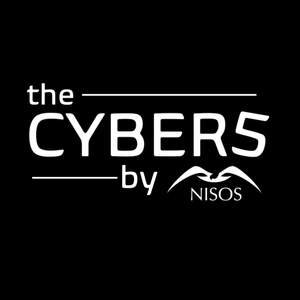
the CYBER5
Nisos, Inc.
All episodes
Best episodes
Seasons
Top 10 the CYBER5 Episodes
Goodpods has curated a list of the 10 best the CYBER5 episodes, ranked by the number of listens and likes each episode have garnered from our listeners. If you are listening to the CYBER5 for the first time, there's no better place to start than with one of these standout episodes. If you are a fan of the show, vote for your favorite the CYBER5 episode by adding your comments to the episode page.

09/28/21 • 25 min
In episode 56 of The Cyber5, we are joined by Ray O’Hara, Executive Vice President for Allied Universal.
We discuss the use of intelligence for corporate security programs, usually overseen by a Chief Security Officer (CSO). We talk about some of the challenges this role faces and how intelligence can be actionable to mitigate those risks. We also work through various case studies, talk about metrics for success, and what technology platforms are used to aggregate intelligence that might be useful in the future.
Four Topics Covered in this Episode:
- Role Shift for Chief Security Officers (CSO)
- For many large organizations, the chief security officer is the chief strategist for organizing the holistic security strategy and obtaining board approval for the organization.
- CSOs are no longer in the day-to-day planning around “guns, guard, and gates.” Instead, they are more strategically focused on business continuity, emergency planning, and crisis management.
- Risk to business leaders drives the daily activities of CSOs. They need to understand that other business leaders may choose to work around the threat to execute against profit and loss.
- Intelligence Sources for Chief Security Officers
- Having a dedicated intelligence analyst is an important asset to a chief security officer.
- Emerging markets, information on key suppliers, as well as competitor data is routine tasking for an intel analysis who is subordinate to the CSO.
- Since security is a necessary cost center on the administrative function within organizations, intelligence analysts need trusted partners to handle the collection and analysis side of intelligence, including social media. Additionally, intelligence analysts ensure that collection and analysis are tailored to business management requirements.
- Sentiment Analysis Combines CISO and CSO Functions
- Negative sentiment analysis against a company's brand traditionally falls within the CSO's GSOC function. However, this responsibility is starting to move toward information security due to threats to confidentiality, integrity, plus the needs for availability of data, systems, and networks from the Dark Web. As long as coordination is present, it doesn't matter whose lane covers social media sentiment analysis.
- Social Media Monitoring Critical For Reducing Executive Protection Resources
- Executive protection is expensive when a physical security threat escalates. Effective social media monitoring and direct threat actor engagement help to derive the most accurate protective intelligence. They can be a more cost-effective way to monitor the danger without having 24x7 surveillance.

09/21/21 • 30 min
In episode 55 of The Cyber5, we are joined by Nate Singleton, a security practitioner who was most recently the Director of IT, Governance, and Incident Response at Helmerich and Payne.
We discussed the conundrums of operational technology security within gas and energy sectors, including risks downstream and upstream. We also compared the aggressive and constant need for interconnectivity on the information operation technology sides of the house to show that events like the Colonial Pipeline ransomware attack are probably just the beginning of future attacks against critical infrastructure.
We also discussed what more major oil and gas companies can do to help improve cybersecurity for small companies critical in the oil and gas supply chain.
Five Topics Covered in this Episode:
- Operational Technology is Built to Last, Bringing Nuance to Security
- Underlying technology controlling oil, gas, and energy PLCs runs on old Linux and Windows servers from 20 years ago and patching for upgrades is expensive and takes a lot of down time.
- Routine vulnerability scanning against an entire IP block often seen within regular IT environments can cause major damage, even resulting in the loss of human life, if not conducted carefully and properly in OT environments.
- Interconnectivity Comparisons Between Legacy Silicon Valley Tech and Operational Tech Development
- Security takes a back seat in operational technology for the Energy Industry, just like it does for Silicon Valley product development.
- The bigger challenge is often integrating regular IT and application developments that need constant upgrades with OT technology that can’t take the upgrades on time. A “move fast and break things” mentality in OT could get someone killed.
- Ransomware and other malware events have the capacity to take down OT production lines for weeks, costing millions of dollars.
- While the Colonial Pipeline ransomware event only attacked the IT environment, it did not attack the OT environment, thus demonstrating the potential for future calamities to occur.
- Attacks Against Oil and Gas are Geopolitical in Nature and Will Likely Get Worse
- Attacks against critical infrastructure are going to get worse and the attacks are often conducted by nation states who have the time to build exploits against the IT environment and are also leveraging sophisticated OT technology.
- Strategies for Protecting Operational Technology in ONG
- OT security is protecting the IT administrator who can access oil rigs, energy systems, and OT devices.
- Reporting must make it from the OT systems to the corporate IT systems so they can see profit and loss. Therefore, many critical infrastructures use the Purdue Model to segment different layers in network infrastructure from the machinery to different levels in the corporate environment so customers can be billed. More granular strategies include:
-
- Updated EDR products in the corporate environment
- Multi-factor authentication separating corporate and OT environments
- Separate domains for engineers’ ability to browse the internet and check email and upgrade software on the OT networks
- Robust firewall policies on the network layer controlling port protocol connectivity back and forth
- Threat Intelligence for OT Security
- Integrating Indicators of Compromise (IOCs) into a SIEM has become an antiquated practice, but they are still valuable for OT environments since they are modeled around constant connectivity and up times.
- Client-specific intelligence of what threat actors are doing is most critical because the remediations will take place over weeks and months. A cost-benefit analysis is always going to be levied when allocating resources to fix vulnerabilities. A “block all” approach to threat intelligence is not going to work.

11/11/20 • 21 min
Episode 32 of the podcast covers how intelligence can be used to assess exposure and pricing risk for cyber insurance coverage.
- Q1 (01:13) What are the challenges for exposure and pricing risk as they pertain to cyber insurance coverage?
- Q2 (06:45) What questions are best to help understand exposure risk and pricing risk?
- Q3 (10:45) How can security stack maturity help underwriters understand and price the risk?
- Q4 (15:30) How can the disciplines around the intelligence cycle (plan, collect, process, analyze, disseminate) be helpful to underwriters?
- Q5 (18:22) How do you communicate these same disciplines to a non-technical board of directors?
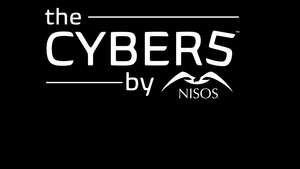
04/23/20 • 13 min
Episode 5 of the podcast focuses on understanding the nuances around insider threat scenarios and features Gabe Ramsey, Partner @ Crowell & Moring.
- Intro (00:18)
- Question 1 (00:56) – Thinking about the team that comes together in an insider threat investigation, what does that look like? Both internal and 3rd parties.
- Question 2 (01:50) - Are there any common trends that you see with companies that are successful in investigating and, from your angle, bringing litigation against an insider threat?
- Question 3 (02:39) - Insider threat, its a very multi-dimensional problem, but all of the effort leads to some kind of legal action or outcome. From your perspective, what is the main network informational gap that you face in trying to prove the actions or intent of an insider?
- Question 4 (04:21) - I've spoken with CISO's specifically on data collection surrounding insider threat, and it seems that there is a general lack of comfort with the total degree of valuable information gathering that can be done within the scope of the law, largely because it seems invasive to the individual. That said with an insider threat situation, you are often trying to prove something that falls more in the realm of human activity, than pure network activity. What are some of the tools you recommend clients use to collect the necessary information to be able to make the right assertion about an individual suspected of being an insider threat, and how do you help them navigate this often-uncomfortable situation?
- Question 5 (07:28) - I've heard people talk about larger, more sophisticated companies allowing technical threats to dwell on specific systems so they can learn more about their motives through the actions they observe on the network, and with insider threat, I can imagine that there is a range of appropriate responses, from immediate separation to levels of overt or covert observation of the individual; from your perspective what does that look like, and what triggers lead to different actions, and what are the actions that companies end up taking?
- Recap & Key Takeaways (10:19)
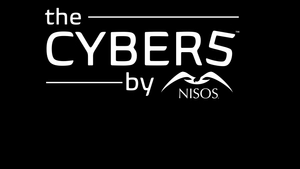
04/02/20 • 17 min
Episode 3 of the podcast focuses on illuminating disinformation and misinformation activity surrounding the COVID-19 Pandemic and features Cindy Otis, Managing Director at Nisos, Inc. Outline:
- (00:00) Intro
- (01:43) Question 1 - The pandemic is obviously something that’s touching every person’s life at this point. Due to the overall disruption, do you think people are more susceptible to disinformation surrounding it?
- (03:48) Question 2 – What types of disinformation have you been seeing pushed out?
- (05:35) Question 3 - Who are the actors behind it? What are they trying to accomplish with it?
- (08:54) Question 4 – If I’m an employer, what can I do to help protect my employees from the influence of disinformation campaigns
- (11:38) Question 5 – We’re still leading up to 2020 elections - Are you seeing corona virus disinformation tied to anything election related?
- (14:58) Recap & Take-aways
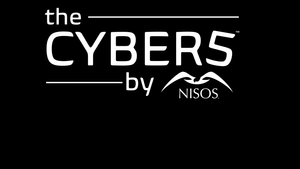
Episode 2 - Inside Purple Teaming
the CYBER5
03/26/20 • 23 min
- (00:28) Introductions
- (03:34) Question 1 - What lead you to start using them at LogMeIn?
- (08:23) Question 2 - Where’s the value in using both Red and Purple Teaming?
- (11:47) Question 3 - What improvements have you seen from using purple teams?
- (15:06) Question 4 - What aspects of workshopping do you find most valuable and why?
- (17:34) Question 5 – How do you measure the success of a purple team?
- (21:50) RECAP
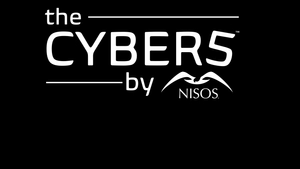
The Cyber5 - Cyber M&A Diligence
the CYBER5
03/10/20 • 17 min
- (00:28) Intro with Randy Sabett, Special Counsel at Cooley LLP
- (01:38) Question 1 – (need to mention minimizing liability) What do you look to accomplish when it comes to cyber diligence surrounding a merger or acquisition?
- (04:12) Question 2 – What is the bare minimum diligence companies should pursue?
- (07:38) Question 3 – What are the tangible outcomes from the type of diligence we’re talking about here?
- (10:22) Question 4 – Are there considerations that a company should make around the stage of a deal and the depth of diligence? IE Too much too soon?
- (14:11) Question 5 – For companies looking to add this to their current M&A process, where is a good place to start?
- (16:13) Discussion Recap
- (16:59) Key Take-away
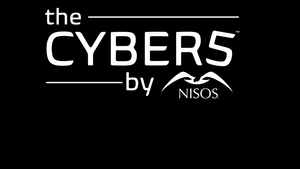
07/09/20 • 24 min
Episode 14 of the podcast covers techniques and tradecraft of open source intelligence and investigations. How these investigations can help businesses and executives avoid online crimes and where automation plays a helping hand.
- (00:44) Intro
- (02:51) Question 1: What is the difference between a cyber threat intelligence analyst and an OSINT investigator?
- (04:22) Question 2: What are some general skillsets you need to be a good online investigator and what kinds of security problems do you solve?
- (09:50) Questions 3: Many people don’t know where to start when they are being scammed, extorted, or hacked. What are the methodologies you’d like to spread to level the playing field? Examples?
- (13:57) Questions 4: What can executives know about removing PII from the internet to protect themselves from physical and cyber attacks?
- (16:50) Question 5: What kinds of interesting datasets are out there in this profession? Where is automation helpful?
- (23:39) Closing
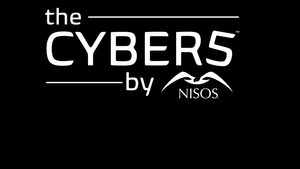
04/16/20 • 13 min
- (00:22) Introductions
- (01:07) Question 1 – As a CISO, if I don’t have clear or accurate insight into the state of my assets and infrastructure, what immediate risks am I incurring?
- (02:23) Question 2 – You’ve started a role as a CISO at a new company - how do you test the information your presented with around the the network, the current state of the security team and tech stack, and when do you trust it?
- (03:21) Question 3 – In your experience, what percentage of the network do you think the average CISO and team have a good handle on and are there trends in the gaps?
- (05:51) Question 4 – Are there any trivial gaps - How complete should a CISO’s knowledge and insight into their environment be; IE If they’re confident on 80% of the network, is that enough?
- (08:43) Question 5 – How has the emphasis on maintaining a meaningful understanding of your network impacted your strategy around the staffing/teams that you’ve built?
- (10:53) Recap & Takeaways

10/26/22 • 39 min
In Episode 84 of TheCyber5, we are joined by members of the CrossCountry Consulting team: Brian Chamberlain, Offensive R&D Lead, Eric Eames, Associate Director, and Gary Barnabo, Director, Cyber and Privacy.
Here are five topics we discuss in this episode:
- Adversary Emulation vs. Simulation and Use of Threat Intelligence
Replaying attacks from adversaries is considered adversary emulation. The pros of emulation are you can react and defend against threat intelligence and the actual techniques during a penetration test. The cons are that many times these are yesterday’s threats. Simulation is the art of coming up with new attack vectors with nuanced penetration testers. The pros are that these attacks give blue teams new ways to think ahead and adapt their defenses before threat actors do. The cons are that these attacks aren’t yet in the wild and the probability of such attacks are not known.
- Values of Threat Intelligence with Red Teams
Indicators of Compromise (IOCs) are immediately relevant with something that is actionable even though the value of IOCs is overcome by events (OBE) in hours. Threat intelligence IOCs are not relevant to heuristics of sophisticated adversaries and that is what sophisticated adversary simulation and threat intelligence combined attempts to overcome. For example, if an enterprise can defend against Malicious HTML Applications (HTAs), that protects them against any sort of adversary using that vector. Another example would be to have a simulated ransomware event, based on threat intel, that drops in several places and simulates everything that six different ransomware families would do (up until encryption).
- Tools Are Not Enough
Enterprises struggle to defend if a security product does not catch an actor in the environment nor how to react in a way that forensically preserves the attacker’s initial access vector. Training incident response and conducting external threat hunting are critical elements to defend and react when an attacker creates a new way to penetrate an environment.
- Satisfying a Chief Financial Officer’s Appetite for Security
In today’s information technology environments, CFOs need to be conversant in cyber security, not experts. Some considerations should be:
- A considerable accountability on security tooling needs to be considered by CFOs because there is an overconsumption of tooling that simply does not make an impact.
- Further, corporate development, merger and acquisition strategy, and payments to vendors, are critical business aspects a CFO should be concerned to protect.
- A CFO should be empowered to initiate a penetration test unbeknownst to the security team. Adversary simulations are often highly political as a result but this kind of dialogue is beneficial for understanding incident response preparation and threat intelligence of how to defend against certain threat actors.
- If a company is in growth mode and over $1B in annual revenue, and if IT cannot integrate acquisitions quick enough, more should be spent on security. If a company is in profitability mode, streamlining security is probably more important. If companies are under $1B in annual revenue, spending on security is always challenging and managed services and consulting come more into play.
- Benchmarks Can Be Challenging
Many companies want benchmarks on how they stack up to industry peers. Every company is different and no two environments are the same so stacking up against industries like third party risk “scores” is challenging and not advisable.
Show more best episodes

Show more best episodes
FAQ
How many episodes does the CYBER5 have?
the CYBER5 currently has 91 episodes available.
What topics does the CYBER5 cover?
The podcast is about Security, Risk, Investigation, Intelligence, Podcasts, Technology, Cyber, Business and Cybersecurity.
What is the most popular episode on the CYBER5?
The episode title 'The Top Nisos Investigations Of the Last Seven Years with Nisos Research Principal Vincas Ciziunas' is the most popular.
What is the average episode length on the CYBER5?
The average episode length on the CYBER5 is 25 minutes.
How often are episodes of the CYBER5 released?
Episodes of the CYBER5 are typically released every 7 days, 13 hours.
When was the first episode of the CYBER5?
The first episode of the CYBER5 was released on Mar 10, 2020.
Show more FAQ

Show more FAQ